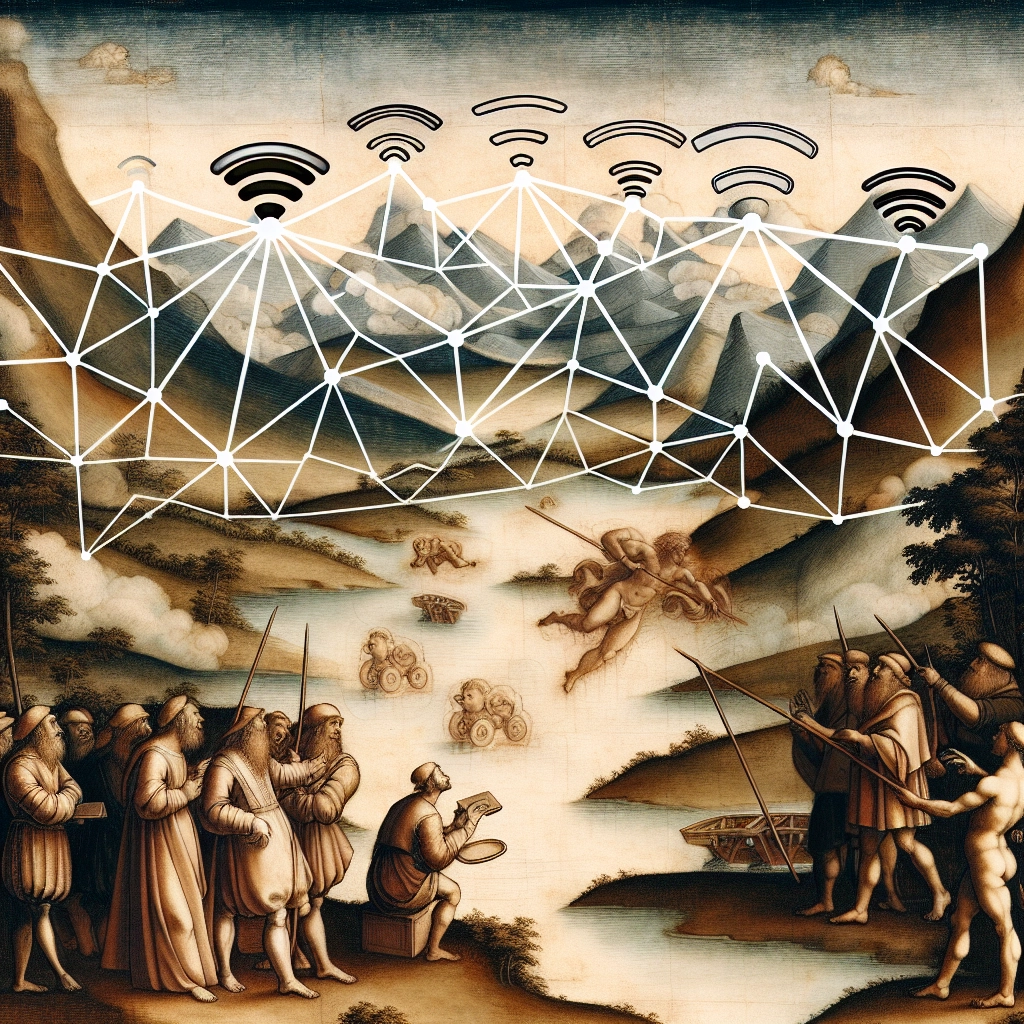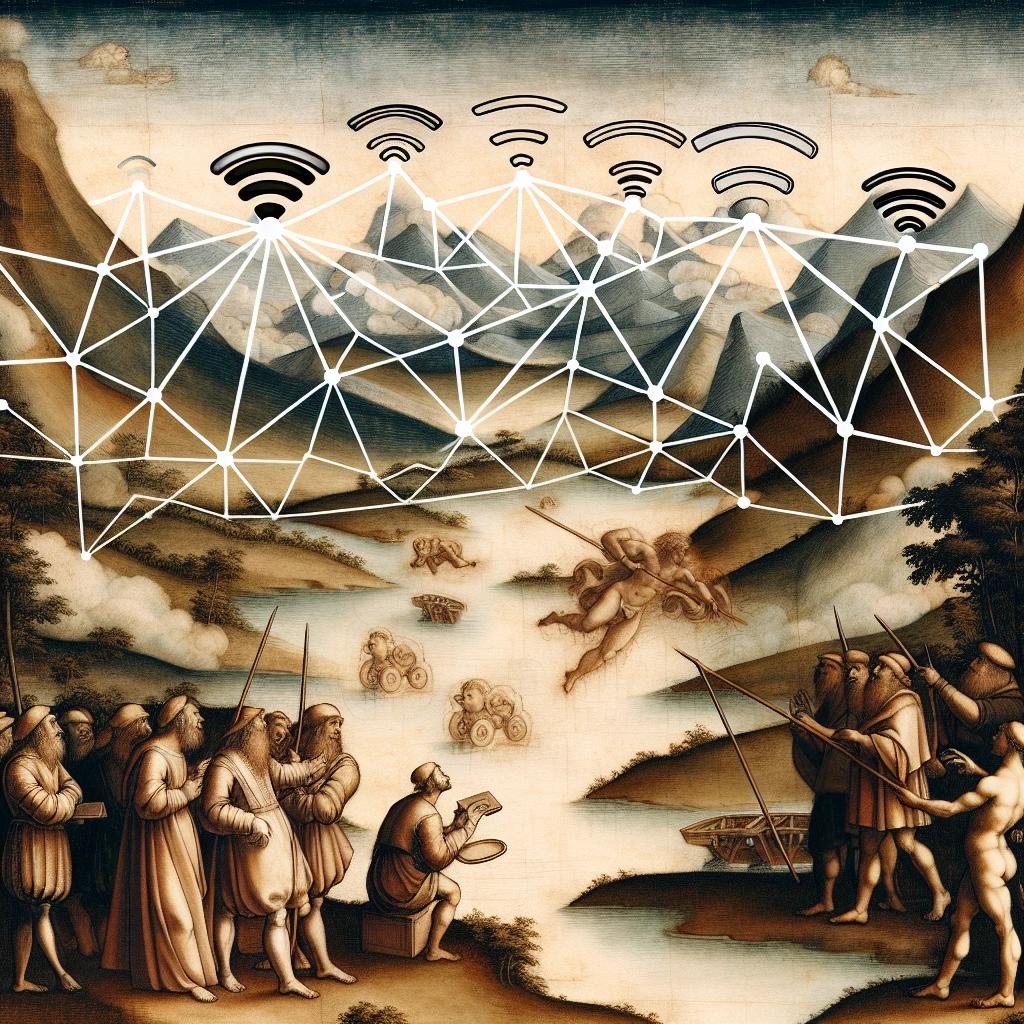The Invisible Highway: Decoding the Science Behind Wi-Fi Technology
 Quantum Cyber Solutions
Quantum Cyber Solutions

Published on
Saturday, August 19, 2023
The Invisible Highway: Decoding the Science Behind Wi-Fi Technology
=======================================================================
Authors

Name
Eric deQuevedo 😄
Twitter
📶 Surfing the Invisible Waves: The Magic of Wi-Fi 📶
Imagine a world where information flows freely through the air, connecting us to a vast network of knowledge, entertainment, and communication – all without a single visible wire. This is the magic of Wi-Fi, a technology that has transformed the way we live, work, and interact with the digital world. But have you ever stopped to consider how this invisible highway actually works? In this blog post, we'll dive into the science behind Wi-Fi and decode the mysteries of wireless communication.
🌈 The ABCs of Wi-Fi: Radio Waves, Frequencies, and Standards 🌈
At its core, Wi-Fi is a wireless networking technology that uses radio waves to transmit data between devices. These radio waves are a form of electromagnetic radiation, similar to the waves used for radio and television broadcasting, but operating at higher frequencies.
Wi-Fi networks typically operate in two main frequency bands:
2.4 GHz: This band is used by older Wi-Fi standards (802.11b/g/n) and is compatible with a wide range of devices. However, it can be more prone to interference from other household appliances, such as microwaves and cordless phones.
5 GHz: This band is used by newer Wi-Fi standards (802.11a/n/ac) and offers faster speeds and less interference. However, it has a shorter range and may not penetrate walls and obstacles as well as the 2.4 GHz band.
Over the years, Wi-Fi standards have evolved to offer faster speeds, better security, and improved reliability. The most common standards in use today are 802.11n (Wi-Fi 4) and 802.11ac (Wi-Fi 5), with the next generation, 802.11ax (Wi-Fi 6), on the horizon.
🕹️ From Router to Device: The Journey of a Wi-Fi Signal 🕹️
When you connect to a Wi-Fi network, your device communicates with a wireless router, which acts as a central hub for the network. The router converts the digital data from your device into radio waves and broadcasts them through the air using an antenna.
These radio waves travel through the environment, bouncing off walls, floors, and ceilings until they reach the receiving device, such as your smartphone, laptop, or smart TV. The receiving device then converts the radio waves back into digital data, allowing you to access the internet, stream videos, or send emails.
However, the journey of a Wi-Fi signal is not without its challenges:
Range: As radio waves travel further from the router, they become weaker and may not be able to penetrate thick walls or other obstacles, resulting in a weaker or lost signal.
Interference: Other electronic devices, such as microwaves, cordless phones, and Bluetooth devices, can interfere with Wi-Fi signals, causing slowdowns or disconnections.
Congestion: In areas with many Wi-Fi networks, such as apartment buildings or crowded public spaces, the airwaves can become congested, leading to slower speeds and poor performance.
To mitigate these challenges, modern routers use advanced technologies like beamforming, which focuses the Wi-Fi signal towards the connected devices, and MU-MIMO (Multi-User Multiple Input, Multiple Output), which allows the router to communicate with multiple devices simultaneously.
🔒 Securing the Airwaves: Encryption and Authentication 🔒
One of the most important aspects of Wi-Fi technology is ensuring the security and privacy of the data being transmitted over the airwaves. To protect against unauthorized access and eavesdropping, Wi-Fi networks use encryption and authentication protocols.
The most common encryption protocols used in Wi-Fi networks are:
WEP (Wired Equivalent Privacy): An older and less secure protocol that is easily cracked by modern hacking tools.
WPA (Wi-Fi Protected Access): An improved encryption protocol that offers better security than WEP but is still vulnerable to certain attacks.
WPA2 (Wi-Fi Protected Access 2): The current standard for Wi-Fi security, offering strong encryption and authentication using the AES (Advanced Encryption Standard) algorithm.
In addition to encryption, Wi-Fi networks use authentication methods like passwords, captive portals, and enterprise-level solutions (e.g., RADIUS servers) to ensure that only authorized users can access the network.
🚀 The Future of Wi-Fi: Faster, Smarter, and More Ubiquitous 🚀
As our world becomes increasingly connected and reliant on wireless technology, the future of Wi-Fi looks brighter than ever. The upcoming Wi-Fi 6 (802.11ax) standard promises faster speeds, lower latency, and better performance in congested environments, making it ideal for the growing Internet of Things (IoT) and smart home devices.
Moreover, initiatives like Wi-Fi 6E, which opens up the 6 GHz frequency band for unlicensed use, and Wi-Fi 7 (802.11be), which aims to deliver even faster speeds and lower latency, are paving the way for a future where Wi-Fi is not just a convenience but a critical infrastructure for our digital lives.
📡 Embracing the Invisible: Connecting with Wi-Fi 📡
So, the next time you connect to a Wi-Fi network and marvel at the instant access to information and entertainment at your fingertips, take a moment to appreciate the incredible science and engineering behind this invisible technology. From the intricate dance of radio waves to the advanced security protocols that keep our data safe, Wi-Fi is a testament to human ingenuity and our unrelenting drive to connect and communicate.
And if someone asks you, "How does Wi-Fi work?" you can confidently share the fascinating story of the invisible highway that connects us all, from the ABCs of radio waves and frequencies to the future of faster, smarter, and more ubiquitous wireless technology. So, embrace the magic of Wi-Fi and surf the invisible waves with newfound appreciation and wonder!
Discuss on Twitter • View on GitHub
Tags
Wi-Fi
Wireless Technology
Radio Waves
Internet
Communication
Questions
Previous Article
Why Magnets Work? : Exploring the Wonders of Magnets
Next Article
Subscribe to my newsletter
Read articles from Quantum Cyber Solutions directly inside your inbox. Subscribe to the newsletter, and don't miss out.
Written by
